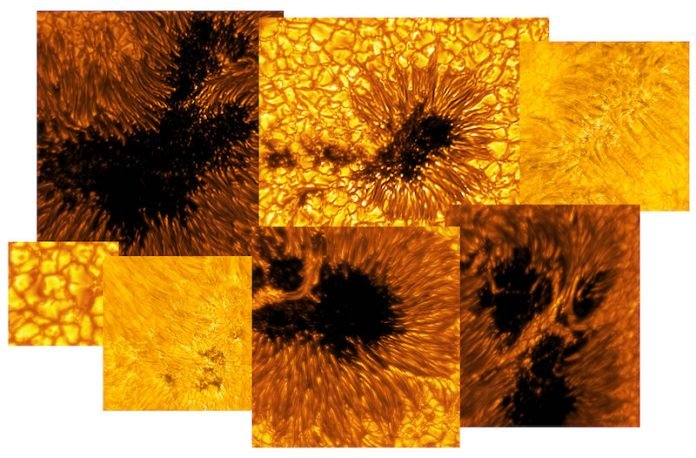
The National Science Foundation’s (NSF) Daniel K. Inouye Solar Telescope, the world’s most powerful ground-based solar observatory, has released eight new high-definition images of the sun, offering a glimpse into the compelling scientific work being conducted at the facility.
The images, captured by the Visible-Broadband Imager (VBI), one of the telescope’s first-generation instruments, provide striking views of sunspots and the quiet regions of the sun.
Understanding Sunspots and Solar Storms
The Inouye Solar Telescope’s remarkable ability to capture data in unprecedented detail enables solar scientists to delve deeper into the understanding of the sun’s magnetic field and the triggers behind solar storms.
The sunspots in the released images represent cool and dark regions on the sun’s photosphere (surface) where strong magnetic fields are present.
These sunspots, which can often be as large or even larger than Earth, vary in size and complexity and can give rise to explosive events such as flares and coronal mass ejections.
These energetic phenomena influence the sun’s outermost atmospheric layer, the heliosphere, and have the potential to affect Earth and its vital infrastructure.
A fascinating feature observed in the images is a light bridge crossing a sunspot’s umbra (dark central region).
These are believed to indicate the beginning of a sunspot’s decay, eventually leading to its disintegration.
The images reveal the complexity of these light bridges, displaying their different forms and phases, with the exact depth of these structures still unknown.
Observing Quiet Regions of the Sun
In the quiet regions of the sun, the images reveal convection cells within the photosphere.
These present a bright pattern of hot, upward-flowing plasma (granules) surrounded by darker lanes of cooler, down-flowing solar plasma.
In the chromosphere, the atmospheric layer above the photosphere, dark, elongated fibrils originating from locations of small-scale magnetic field accumulations are visible.
Moving Towards Full Operational Capabilities
The recently inaugurated telescope is currently in its Operations Commissioning Phase (OCP), a transition period during which the observatory is gradually achieving its full operational capabilities.
During this phase, the international science community was invited to submit science proposals requesting telescope time for specific and detailed science goals.
These proposals were peer-reviewed, and telescope time was granted by a Telescope Allocation Committee for selected proposals to be executed during the 2022 Cycle 1 operations window.
The newly released images represent only a small portion of the data obtained from the first Cycle.
The Inouye Solar Telescope’s Data Center is continuing to calibrate and deliver data to scientists and the public.
As the telescope continues its exploration of the sun, the scientific community anticipates more significant discoveries and stunning views of our solar system’s primary celestial body.
Provided by the Association of Universities for Research in Astronomy.



